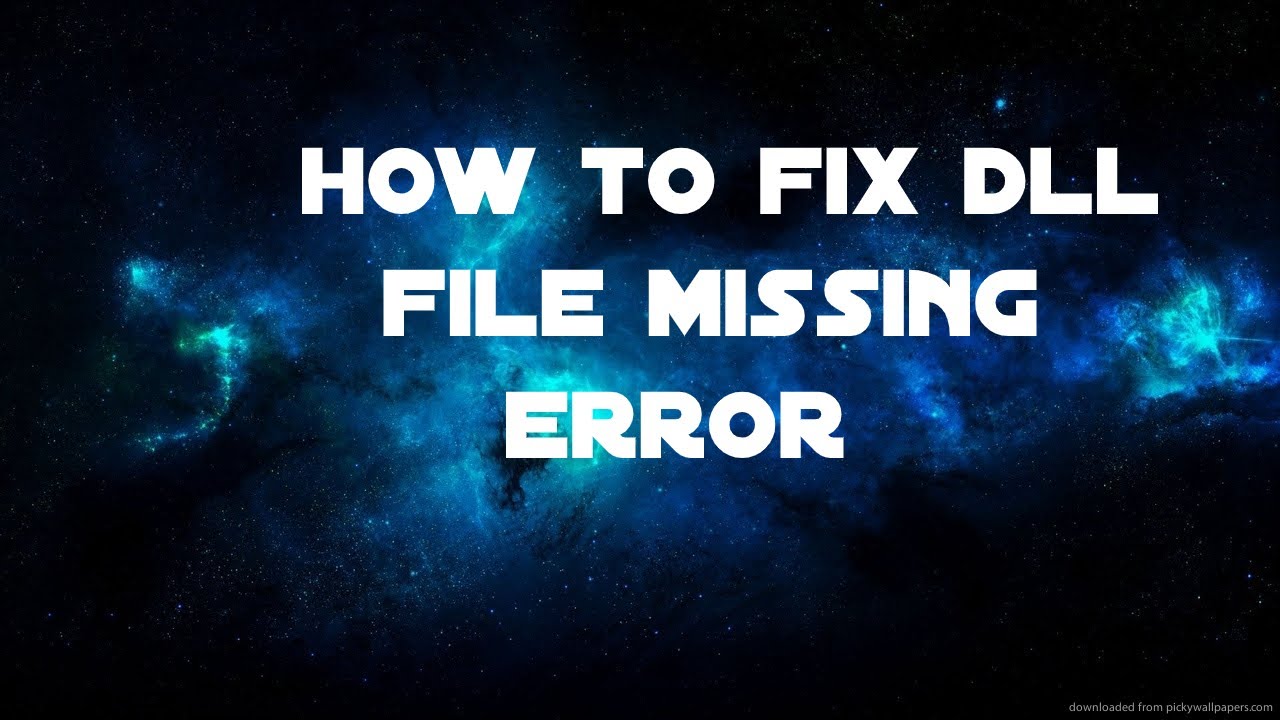

DLL files are necessary to launch a program although they are not used frequently as editorial files.

Common DLL files are typed like: comebase.dll, combat.dll and FegFilter.dll etc. How to Fix DLL Files Missing Problems on WindowsĪ DLL file refers to a Dynamic Link Library file, which is an external part of the application running on Windows. Note: You will have to substitute the full path to the DLL you have just copied over in place of. If you are asked to “re-register” the DLL file that you’ve copied over, do the following: Then copy the DLL file over to the computer that is missing it. To do this, simply head over to the other computer with a fresh USB, find the DLL file in the application’s folders, and make a copy. If you have another computer that runs the same programs that you are having trouble with, you may be able to copy its DLL file over to the computer that has a missing DLL. Copy the DLL File Over If You Have Another Computer You can read more about the Dependency Walker on Microsoft’s website here. The Dependency Walker will be under “ Common”, then “ Tools”.Click on Program Files, then Microsoft Visual Studio.You can find Dependency Walker by heading to the hard disk drive where you installed Microsoft Visual Studio. Program files and DLL files that are invalid.To do this, you simply open the program up while in Dependency Walker. In your computer’s search bar, type in “Command Prompt”.ĭependency Walker can recursively scan all dependent DLL files that are used by a program.This works if the DLL file was deleted accidentally, lost, or corrupted. You can use Windows 10 built-in System File Checker (SFC) to scan your system for the “missing. Why? Some malicious viruses will pretend to be DLL files, which end up damaging your programs. It is always a good idea to run an antivirus scan to look for malware or viruses that could be playing havoc on your. 9 Methods for Fixing Missing DLL Errors on Windows 10 1. While this is one way to fix the problem, there are several other methods you can try which we’ve outlined below. In any of these instances, your programs may not start and your computer may tell you to re-install the application to fix the issue. The DLL file becomes corrupted due to malware or a hardware malfunction.This may make existing DLL files invalid or incompatible. The DLL file was overwritten with a new installation of a program.This can happen during hard disk cleaning or during the removal of programs. The DLL file was accidentally deleted.You may receive a missing DLL error if any of the following occur:


 0 kommentar(er)
0 kommentar(er)
